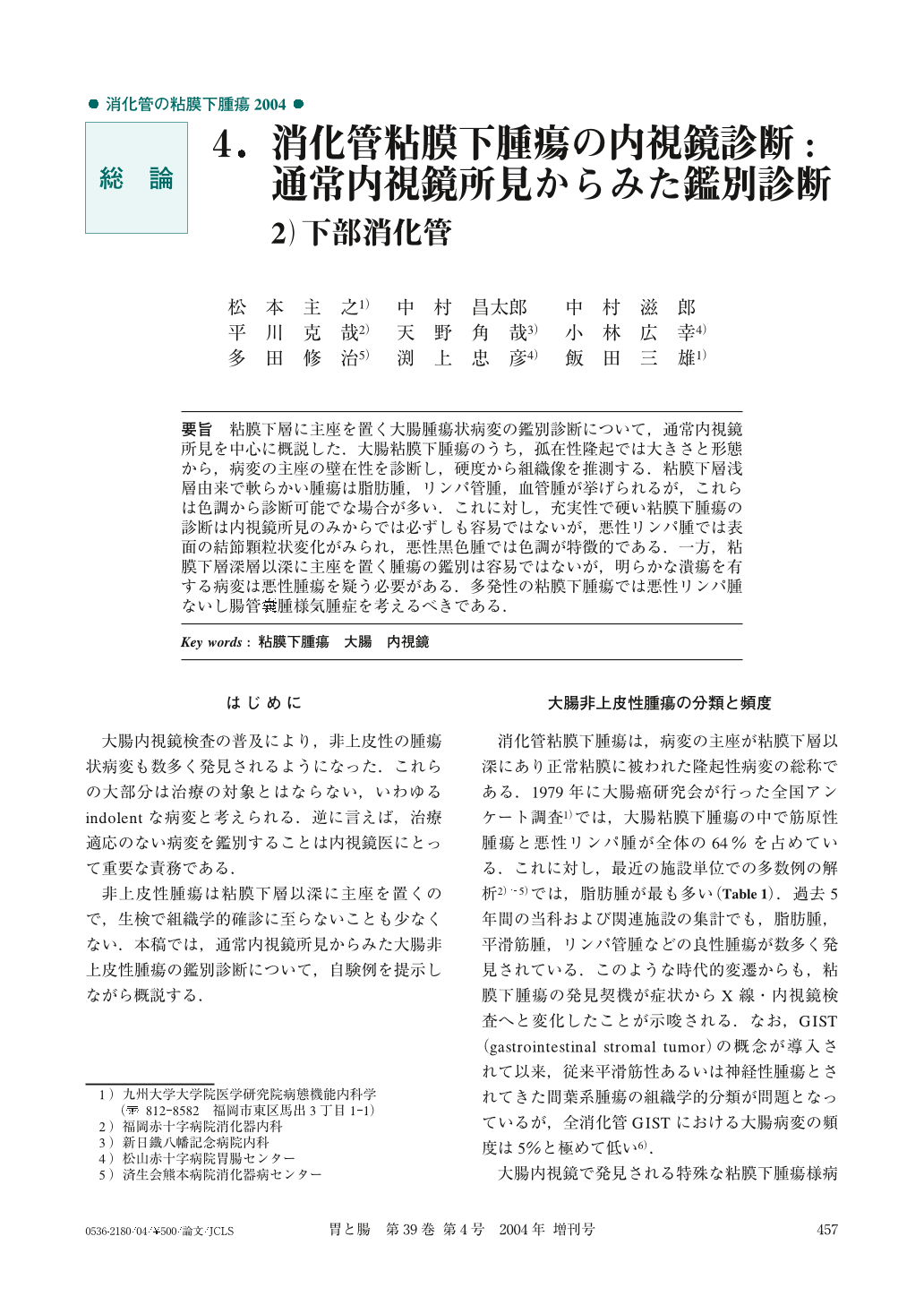Japanese
English
- 有料閲覧
- Abstract 文献概要
- 1ページ目 Look Inside
- 参考文献 Reference
- サイト内被引用 Cited by
要旨 粘膜下層に主座を置く大腸腫瘍状病変の鑑別診断について,通常内視鏡所見を中心に概説した.大腸粘膜下腫瘍のうち,孤在性隆起では大きさと形態から,病変の主座の壁在性を診断し,硬度から組織像を推測する.粘膜下層浅層由来で軟らかい腫瘍は脂肪腫,リンパ管腫,血管腫が挙げられるが,これらは色調から診断可能でな場合が多い.これに対し,充実性で硬い粘膜下腫瘍の診断は内視鏡所見のみからでは必ずしも容易ではないが,悪性リンパ腫では表面の結節顆粒状変化がみられ,悪性黒色腫では色調が特徴的である.一方,粘膜下層深層以深に主座を置く腫瘍の鑑別は容易ではないが,明らかな潰瘍を有する病変は悪性腫瘍を疑う必要がある.多発性の粘膜下腫瘍では悪性リンパ腫ないし腸管嚢腫様気腫症を考えるべきである.
Submucosal tumors of the large intestine give rise to various histologies. For the accurate diagnosis of a solitary submucosal tumor, the main layer of the involvement within the colonic wall should be determined by the size and configuration of the tumor. Its consistency is another item for presumption of the histology of a tumor beneath the mucosa. Soft tumors, such as lipoma, lympnagioma and hemangioma, can be distinguished from each other by the surface color. In contrast, colonoscopy is insufficient for diagnosing solid and hard submucosal tumors. However, ulceration on the surface of the tumor is suggestive of malignant neoplasm. Malignant lymphoma and pneumatosis cystoids intestinalis should be considered when submucosal tumors occur in multiplicity.
1) Department of Medicine and Clinical Science, Graduate School of Medical Sciences, Kyushu University, Fukuoka, Japan

Copyright © 2004, Igaku-Shoin Ltd. All rights reserved.


